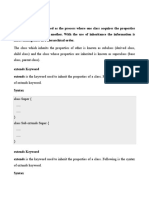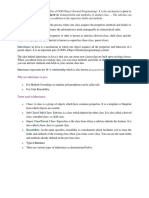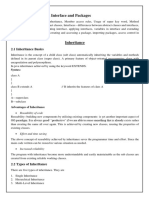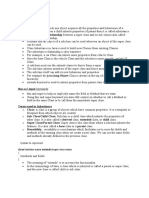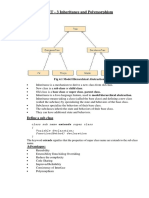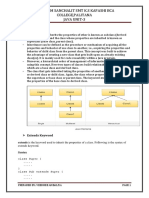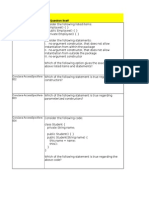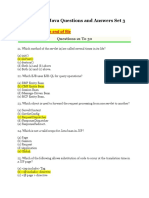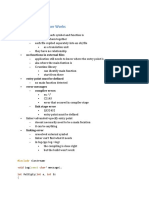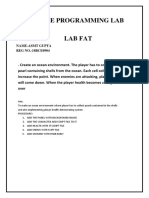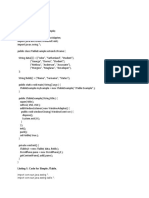0% found this document useful (0 votes)
17 views9 pagesInheritance
Inheritance allows classes to inherit properties from other classes, creating a parent-child relationship between them. There are different types of inheritance in Java, including single inheritance where a subclass extends a single superclass, multilevel inheritance where a subclass acts as a superclass for another, and hierarchical inheritance where multiple subclasses extend from a single superclass. Inheritance promotes code reuse and is used to achieve runtime polymorphism through method overriding.
Uploaded by
sumitkumar184280Copyright
© © All Rights Reserved
We take content rights seriously. If you suspect this is your content, claim it here.
Available Formats
Download as PDF, TXT or read online on Scribd
0% found this document useful (0 votes)
17 views9 pagesInheritance
Inheritance allows classes to inherit properties from other classes, creating a parent-child relationship between them. There are different types of inheritance in Java, including single inheritance where a subclass extends a single superclass, multilevel inheritance where a subclass acts as a superclass for another, and hierarchical inheritance where multiple subclasses extend from a single superclass. Inheritance promotes code reuse and is used to achieve runtime polymorphism through method overriding.
Uploaded by
sumitkumar184280Copyright
© © All Rights Reserved
We take content rights seriously. If you suspect this is your content, claim it here.
Available Formats
Download as PDF, TXT or read online on Scribd
/ 9







